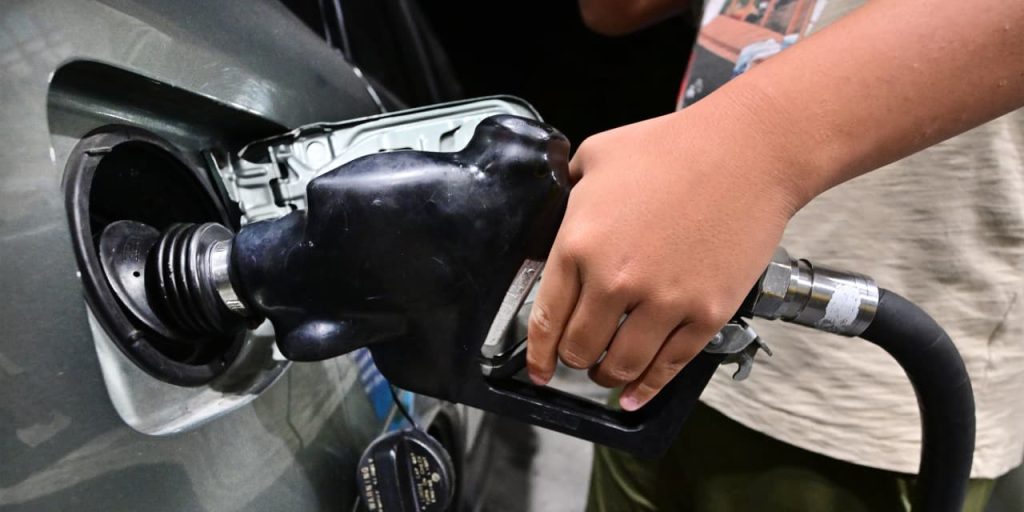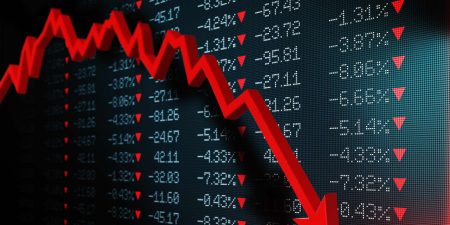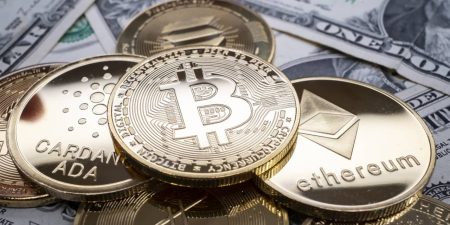Consumer prices rose faster in December despite falling gasoline prices at the pump, showing that the Federal Reserve’s fight to tamp down inflation still has a way to go and potentially spoiling investors’ hopes for rate cuts.
The consumer price index climbed 3.4% year over year last month, an acceleration from the 3.1% pace logged in November, according to data released by the Bureau of Labor Statistics on Thursday. Economists surveyed by FactSet had estimated that December’s inflation rate would come in at 3.2% year over year.
On a month-over-month basis, the headline index rose 0.3%. Economists forecasted the pace of inflation would rise to 0.2% from the 0.1% monthly rate recorded in November.
While the pace of headline inflation was on the rise in December, core CPI—a metric that excludes the more volatile food and energy indexes and is generally considered a better gauge of underlying trends—continued to decline slightly. Core CPI growth slowed to 3.9% year over year in December, down from the 4% rate seen in November. Economists had forecast that last month’s gain in core CPI would inch lower to 3.8% year over year.
On a monthly basis, core CPI rose 0.3%, holding steady with the monthly rate recorded in November. Economists had expected that rate to remain fairly steady in December.
(This is a breaking story. Check back soon for more detail. Below is a look at what economists expected before the report.)
The latest inflation reading is set to disappoint investors looking for evidence that the Federal Reserve will start cutting interest rates as early as March.
Despite the recent plummet in gasoline prices, Thursday’s consumer price index report is expected to show headline inflation rose 3.2% year over year in December, according to economists surveyed by FactSet. That’s up from the 3.1% pace recorded in November.
There are some base effects coming into play for the data, as the annual headline inflation rate fell significantly the previous December, to 6.5% on an annual basis from 7.1% in November 2022. Even so, economists forecast that prices also grew by 0.2% on a monthly basis in December 2023, up from the 0.1% rate seen in November.
If there is a slight uptick in headline inflation, it could bolster support for Fed policymakers’ plans to hold the current high federal-funds rate steady for longer—rather than initiate cutting rates as many investors are hoping—to prevent inflation from reigniting and bring about price stability at the bank’s 2% target.
The risk of a resurgence in inflation is not unrealistic, given current conditions.
“The underlying inflationary backdrop is still inherently unstable due to various crosswinds, such as relatively tight labor conditions and persistent fiscal deficits,” writes Matt Eagan, portfolio manager and co-head of the full discretion team at Loomis, Sayles. There also is some concern that the recent Red Sea attacks could fuel short-term supply- chain inflation.
Eagan also says there is the possibility the U.S. starts getting monthly CPI prints of 0.3% or higher, though that isn’t his base case. If that occurs, however, it would throw into question the Fed’s entire rate strategy, Egan writes.
That said, the inflation picture actually looks better for the core CPI reading, which excludes the more volatile food and energy prices and is thought to be a better indicator of underlying price growth trends. Economists expect core CPI to have slowed to 3.8% year over year in December, down from the 4% rate notched in November.
But while this is down substantially from the 5.7% pace logged in December 2022, it’s still nearly double the Fed’s 2% target. And even though shelter costs are expected to moderate—particularly rent prices—goods prices could reaccelerate slightly, and that could keep core CPI inflation stable at 3%, according to J.P. Morgan strategists.
The pace of monthly core inflation is expected to slow to 0.2% in December, compared with 0.3% in November, according to FactSet.
The expected uptick in headline inflation is due to rising prices in a range of sectors that outpaced falling gasoline prices. Despite gas prices hitting a national average of $3.09 by the end of last year, used car prices surprisingly jumped in December, along with a bump in medical goods and services prices and continued rises in car insurance, according to James Knightley, ING’s chief international economist. Knightley also expects Thursday’s data to show the cost of shelter remained firm last month as well.
The so-called “supercore” inflation measure—services excluding energy and shelter—is also expected to show residual strength, Knightley writes. Fed policymakers have pointed to the importance of this metric because it is more sensitive to the labor market, and a persistently tight workforce could keep price pressures elevated for longer.
“The core and the supercore remain too hot for the Fed to swing towards signaling the imminent prospect of an interest-rate cut,” Knightley writes. “While supply chain pressures continue to subside and energy price falls have a depressing effect, there remains residual strength.”
There is some room for optimism around disinflation trends, however. Although annual headline CPI readings have remained just above 3% since June, the continued slump in gasoline prices and an expected drop in rent prices indicate that the headline CPI will break below 3% by the second quarter of this year, Knightley writes.
Still, barring any major surprises, it’s looking like the Fed won’t pull the trigger on rate cuts until at least the June Federal Open Market Committee meeting.
The consumer price index report is scheduled to be released at 8:30 a.m. Eastern on Thursday.
Write to Megan Leonhardt at [email protected]
Read the full article here















